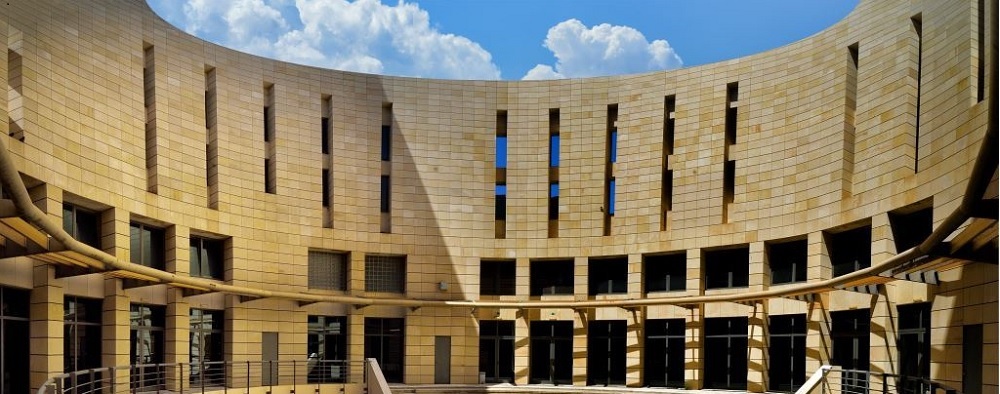Location and Campus
Crete – Chania
Crete is the largest Greek island and the fifth largest island of the Mediterranean area-wise. It is organized geographically and administratively in four prefectures (Chania, Rethymno, Irakleio and Lasithi). Crete’s population is close to 600,000 inhabitants, and she is in a key geopolitical location, in between three continents: Europe, Asia, and Africa. Archaeological excavations have brought to light finds which can be dated back to the Neolithic age and show the development of a remarkable civilization of the time.
Chania, with 60,000 inhabitants, is the second largest city of Crete population-wise. Chania is inhabited since Neolithic times, and recent excavations have unearthed relics of an important Minoan center. During the historic times Chania, then known as Kydonia, was one of the most significant cities of Crete.
 The city of Chania was rebuilt in 1252 at the location of the Byzantine fortress (called Kasteli – meaning castle), using building material from the ruins of Kydonia. Around the city one could find the Venetian monasteries of St. Francis (where the archaeological museum is housed today), of St. Nicholas of Splantzia (a Greek Orthodox church today), of St. Salvatore, and more.
The city of Chania was rebuilt in 1252 at the location of the Byzantine fortress (called Kasteli – meaning castle), using building material from the ruins of Kydonia. Around the city one could find the Venetian monasteries of St. Francis (where the archaeological museum is housed today), of St. Nicholas of Splantzia (a Greek Orthodox church today), of St. Salvatore, and more.
Towards the end of the 19th century, when Chania was the capital of Crete, the new city was rapidly developed around the old city, outside the Venetian walls. In the picturesque neighborhood of Chalepa one can find the former French School building (a conference center of the Technical University of Crete today), the house of the most prominent political figure of modern Greece – Eleftherios Venizelos, the house of Prince George, and many more neoclassical buildings. There are even more neoclassical buildings in other parts of the city such as the Municipal Market, the city clock tower, the Prefectural Administration building (a former Turkish hospital), the Historical Museum of Crete which is co-housed with the Anthropological Museum of Crete, and more.
Chania has an intense cultural activity, especially during the summer months and during celebrations (e.g. of the Battle of Crete in WWII). The city has well equipped athletic facilities for tennis, basketball, soccer, swimming (with pools near the sea) and water sports.
More information can be found at the sites: Municipality of Chania, Prefectural Administration of Chania, Province of Chania
The Technical University of Crete and Akrotiri
The Technical University of Crete (TUC) is located at the Akrotiri peninsula on 700 acres of its own land, granted by the State. It is 7 km NE of the city of Chania. There are many interesting sites in Akrotiri, including the beautiful park with Venizelos’ graves at Prophet Elijah (Profitis Ilias), three monasteries (Holy Trinity – Agia Triada- of the 17th century, Gouverneto of the 16th century and St. John the Hermit – Agios Ioannis o Erimitis - of the 18th century) and many beaches for swimming with the European Union Blue Flag certification. The international airport of Chania is 8km away at the SE of the Technical University of Crete campus, and the natural port of Souda is 7km away, towards the South.
The TUC Campus at Akrotiri, Chania
The School Registrar’s office, the School Administration building and the faculty and staff offices are at the School building clusters in the Akrotiri campus, near the village of Kounoupidiana, 7km NE of the town of Chania. The campus is in 700 acres of land, and it is shown in the map, below. All classes and labs take place on campus.
 The modern buildings comprising the School facilities offer a variety of spaces for teaching, research, and work environments, and they are up-to-date regarding safety standards, whereas at the same time they blend with the environment, having won state-wide architectural awards for their design. The main building of the Sciences Complex, currently under construction, will house the School offices and labs which are now located at various other sites on campus.
The modern buildings comprising the School facilities offer a variety of spaces for teaching, research, and work environments, and they are up-to-date regarding safety standards, whereas at the same time they blend with the environment, having won state-wide architectural awards for their design. The main building of the Sciences Complex, currently under construction, will house the School offices and labs which are now located at various other sites on campus.
Transportation
You can reach the campus as follows:
- From the airport of Chania at Akrotiri and back with taxi cab (~14km Chania – Airport, ~8km Campus – Airport).
- From the port of Souda with taxi cab (~7km) or by bus via Chania.
- From the town of Chania and back via taxi cab or bus.
The bus lines are marked (in Greek) 'ΠΟΛΥΤΕΧΝΕΙΟ' (Technical University), they depart once per hour and the route is indicated on the map, below. A second line marked (in Greek) 'ΚΟΥΝΟΥΠΙΔΙΑΝΑ' (Kounoupidiana) has less frequent departures but the busses of this line as well go right in front of the Campus entrance (but only in the Chania-Kounoupidiana direction and not in the return route).
Private cars entering the Campus can do so via the central gate. There is ample parking on campus (all parking is free) for the members of the university community as well as for visitors. 
Postal Address
The postal address of the School is:
School of Electronic and Computer Engineering
Technical University of Crete
Akrotiri Campus
73100 Chania, Crete
Greece



